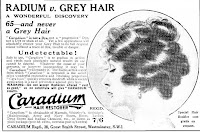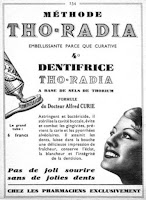Today was the nicest weather we've seen since summer ended. I made a point to go to Prescott Park so I could read my book while feeling the sun shine on my face. I recently started reading The Radium Girls by Kate Moore and the story she weaves together, featuring a large cast of characters, is fascinating.
I thought I knew the story of these women. I know that radium is poisonous, and I knew that these women were exposed to it for hours a day without any type of protective clothing over the course of years, so that they all developed horrible cancers from their work.
Those are the basics, but I always pictured the beginning of the story differently. I thought that Big Business was to blame for these women's ordeals because it selfishly allowed them to work in dangerous conditions, exploiting the cheap labor and mistreating the employees. Most of the narrative of women in the working conditions follows that plot line (The Lowell Mills, Triangle Shirtwaist Factory, Norma Rae). I was completely unaware of the celebrity involved.
The employees weren't celebrities; the celebrity was radium. Radium was viewed as a miracle in itself. Marie Curie called it "my beautiful radium." Many people referred to it as "liquid sunshine." Because radium was the most expensive substance in existence, it was associated with wealth and luxury.
People drank radium water, and bought radium chocolate:
They used it to cover their gray hair, and whiten their smiles:
There were songs about it, and dances inspired by it:
Indeed, even the teenage girls and young women who sought to work, detailing the watch dials with the luminous paint, were ecstatic when they first got hired. Most of them had minimal education, and the radium jobs paid more than any other type of factory job. In fact, the companies were known as "radium studios" which made them seem more artistic and glamorous, and the girls were permitted to talk and socialize as they worked. They felt privileged to have those jobs, and they were envied by girls in other jobs that did not pay nearly as well.
This book has the gears in my mind turning with all the possibilities for Makerspace projects.
There's a product by Tim Holtz, small wooden watch faces which are used for mixed media art assemblage, and they could be painted with glow-in-the-dark paint so that students could understand what the work was like.
Or perhaps the students could design a picture or message that they think represents the story. After sketching it out on plain white paper, lightly with pencil, they could go over it with glow in the dark puff paint. After the paint has dried, they can see the pictures by turning out all the lights.
The story would also translate well into a game, either board/card or role playing. Maybe a pack of neon-colored index cards could be used, and facts from real historical figures could be written on them and passed out during the game. For example "You've just been hired at the radium studio! Collect $20!" and as the game continues, players receive cards that read "Four of your teeth have fallen out, so you visit the dentist. Lose $5."
If the game idea seems too irreverent, then perhaps students could research some of the actual radium girls, and then use the Inklewriter platform to write their own Choose Your Own Adventure stories, based on what they read.
This story is ideal for connecting history and science curriculum, and Maker mindset.







No comments:
Post a Comment